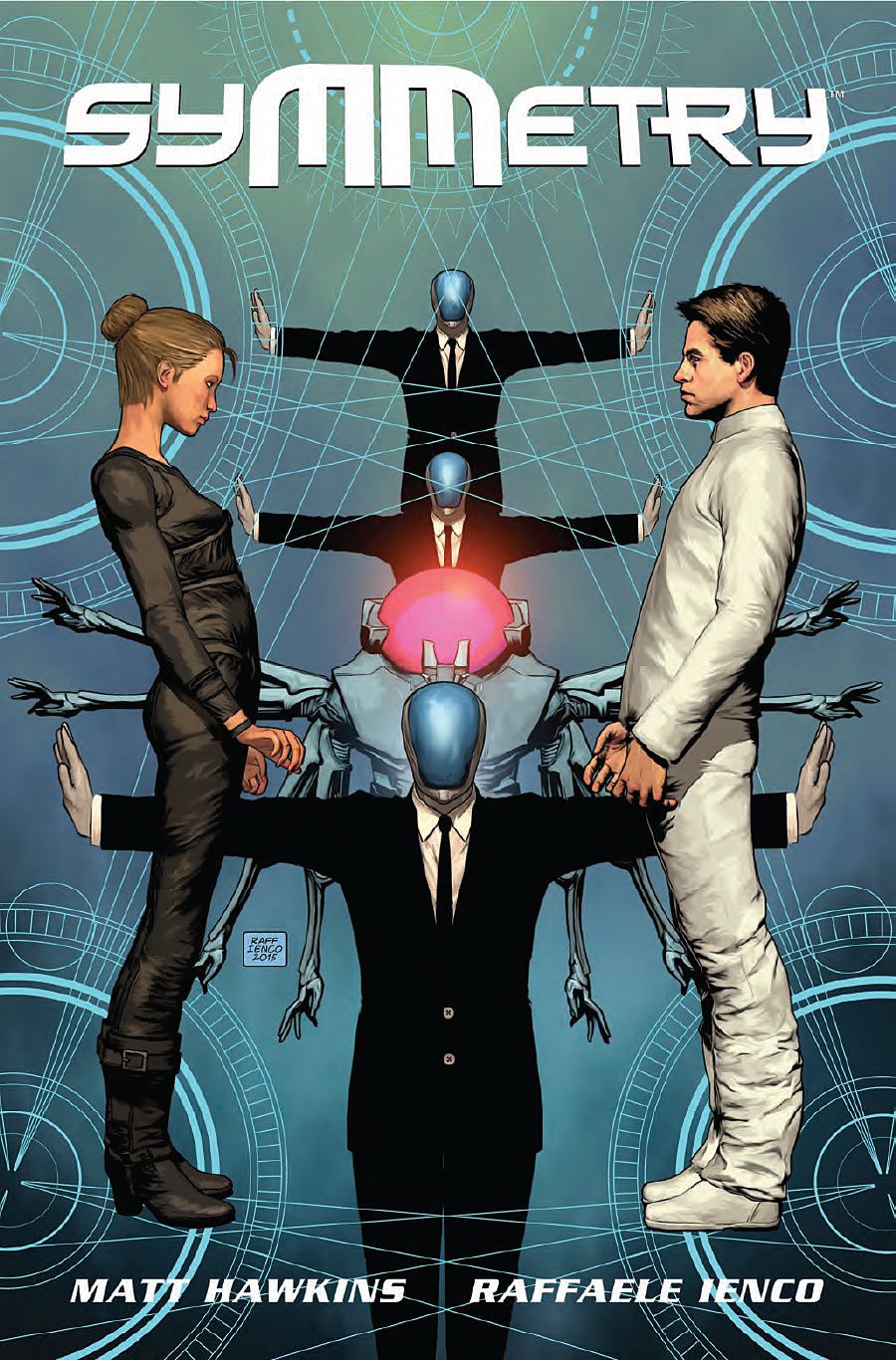Utopian societies are hard to pull off in fiction, because -- despite the happy premise -- there's always a not-so-hidden element of discord, to the point where the trope seems overused before the story really unfolds. Matt Hawkins and Raffaele Ienco manage that dichotomy pretty well in "Symmetry" #1 by blatantly revealing that all is not well in paradise as early as the very first page. Hawkins doesn't actually establish that the story even takes place in a utopian world until after the opening sequence, and at that moment effectively puts to rest whatever preconceptions readers might have.
In Hawkins and Ienco's story, a singular artificial intelligence is bonded with every individual, providing them with a seemingly idyllic life free of illness and hardship, but also free of diversity and relationships, save for the purposes of reproduction. While this has become the standard of life for mankind within the story's context, the characters are therefore largely accepting of it and the socialist aspect of it immediately tells readers that this so-called utopia is nothing of the kind. There's no mistaking that something is amiss, even when disregarding the opening sequence; knowing that readers won't be fooled into thinking this is some kind of perfect existence, Hawkins doesn't even try to convince them.
The creators also shy away from many of the other cliches often found in such stories; despite the all-encompassing intelligence that connects the populace and the similarly white, sterile outfits they wear, there's not a complete lack of individuality, which allows for some characterization of not just the main protagonist but also others in the cast. Within the context of the story, the population is permitted to choose their own gender and name at a certain age, which establishes the influence had on the story's main character Michael by his older brother. There remains a distant but palpable sense of kinship and friendship with others, even though it's deliberately muted by the story's very essence. It's enough to make the characters engaging, though, and enough to make readers feel for them.
Ienco turns in some lavish art that's almost breathtaking in places, although some of the panels have a kind of static feel and some of his figures look a little stiff. Overall, though, his lines and colors are beautiful, and the pacing he establishes for the opening action sequence is superb. Ienco has the skill and flexibility to create and illustrate futuristic sci-fi tech as well as he does the timeless beauty of nature, and he excels the most during the scenes where Hawkins' story allows him to combine both.
He also excels at facial likenesses, which is especially important in a story set against a world of conformism that also requires characterization. Ienco's excellent symbolic cover provides a strong hint at the issue's turning point but gives nothing away before it unfolds naturally during the course of the story. Yes, "Symmetry" #1 is another utopic/dystopic sci-fi premise, but Hawkins skillfully freshens up the idea and Ienco makes it attractive and surprisingly diverse.

